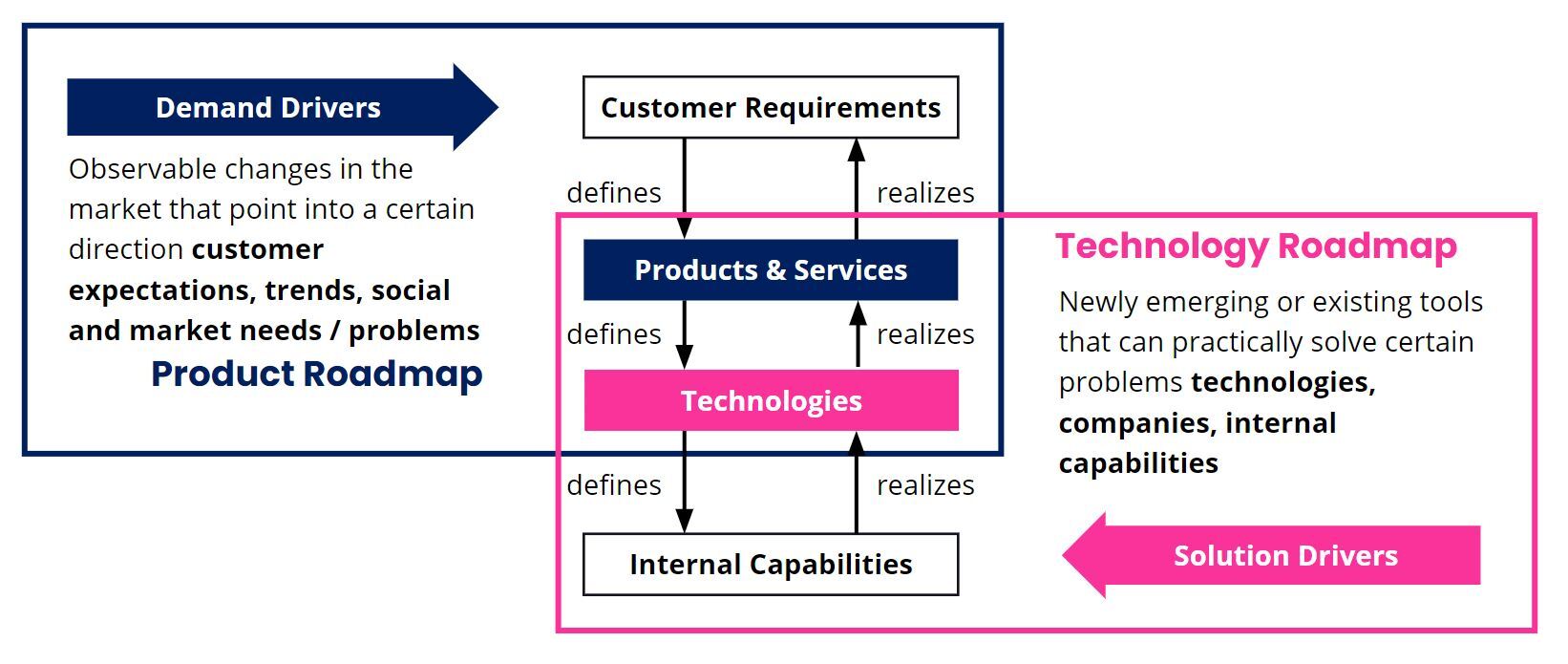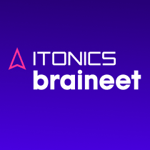In undertaking the ITONICS Where to Play 2021+ Report and annual portfolio refresh, our aim was not to merely catalog the most pertinent Trends and Technologies across industries and markets but to add a layer of practicality to our research.
During the environmental scanning process, our team of analysts is invariably guided by this aim and has sought to answer the overarching question: how can we develop a classification method that allows organizations to see where Trends can have the most significant impact on their value chain? In response, the 4 Ps approach was born.
Purpose. Process. Product. People. Taking inspiration from Doblin’s 10 Types of Innovation, each "P" in our portfolio represents a focus area that businesses can utilize to analyze their own innovative objectives.
The 4 Ps provide a framework of applicability to our portfolio of Trends. However, all of our Trends represent specific themes that speak to consumer needs and fundamental shifts within the context of social, technological, economic, environmental, and political spheres. We call these the ITONICS Trend Themes. We think it is vital for businesses to understand where precisely in their value chain the Trends fit in as well as how they can be clustered and connected to understand larger movements that will impact the future of innovation.
This article highlights 7 ITONICS Trend Themes and how each of these themes encapsulates vital demand drivers that can help you better navigate our portfolio of Trends for better strategic intent.
Understanding Demand Drivers

The ITONICS Trend Themes represent clusters of Trends that share underlying demand drivers. As an indication of market pull, demand drivers are directional forces that help innovators better understand market and consumer shifts. In turn, this understanding of demand drivers and how the Trends interact, complement, or even contradict one another builds the innovation intelligence needed to discover opportunities and direct innovation objectives.
Demand drivers sit in contrast to solution drivers, which aim to provide disruptive, game-changing solutions to problems faced in the market. Technologies, capabilities, methods, and tools all act as solution drivers within the market.
ITONICS Trend Themes
The ITONICS Trend Themes reflect the variety of consumer shifts and key social, technological, economic, environmental, and political zeitgeists in play within the market. By understanding each Trend Theme, you will develop a richer understanding of how our Trend portfolio speaks to the current moment and how each Trend can impact your business function.
1. The Human Imperative: Centering the People Behind the Consumer

|
Human Imperative Trends |
4 P Classification |
|
Proactive Health Enforcement |
Purpose |
|
Behavior Shaping |
Purpose |
|
Beyond Compliance |
Purpose |
|
Empathetic Brands |
Purpose |
|
Biophilic Design |
Process |
|
Diverse Perspectives |
Process |
|
Flexible Workplace |
Process |
|
Responsible Telehealth |
Product |
|
Inclusive by Design |
Product |
|
Democratization of Education |
People |
|
Mental Balance |
People |

The Human Imperative focuses on new consumer preferences, new desires, and new ways of making meaning in the world. Trends such as Diverse Perspectives, Flexible Workplace, and Biophilic Design show that workspaces—both culturally and architecturally—need to be made (and in some cases re-made) in the image of the employees who work within the space. The Human Imperative theme is not merely concerned with people today but also places a firm emphasis on posterity and the condition in which we are leaving Earth for those yet to inhabit it. Trends such as Beyond Compliance also reveal the expectation for companies to be internally motivated to ensure that their environmental impact does not just abide by ESG standards. There is a compelling drive to go the extra mile to strive for more than net-zero for the sake of both business operations and humanity.
The Human Imperative theme is also concerned with the various types of wellness needed for people to flourish and live complete lives. Mental Balance and Proactive Health Enforcement demonstrate that products and services are increasingly being analyzed through a prism of whether they encourage healthy habits and take cognizance of consumers’ mental health.
2. Digital Accountability: Setting Parameters to the Digital Age

|
Digital Accountability Trends |
4 P Classification |
|
Radical Transparency |
Purpose |
|
Data Ethics |
Purpose |
|
Data Sustainability |
Process |
|
Big Tech Regulation |
Process |
|
Data Secure by Design |
Product |
|
Tracing Origin |
Product |
|
Data Ownership |
People |
The theme Digital Accountability reflects the many ways in which COVID-19 has accelerated digital transformation and influenced our relationship with certain technologies. It encompasses the various policy and technological shifts which speak to how we are holding corridors of power responsible for promoting or hindering digital wellness, data protection, and personal agency.
Trends such as Data Ownership and Big Tech Regulation reflect this sentiment; the technology companies we entrust with so much of our daily lives and private information need to have parameters within which to operate and enforced regulations to ensure adherence. This sentiment is driven not only by consumers who have a stake in how their information is used but also by governments who wish to ensure that data is used in ways that do not compromise democracies.
Between the pull of consumer expectations and needs and the push of technological solutions, Digital Accountability not only reflects a key demand driver but simultaneously is calling for specific adjustments to existing solution drivers.
3. Next Normal Infrastructure: Imagining New Realities, Building New Worlds

|
Next Normal Infrastructure Trend |
4 P Classification |
|
Smart Cities |
Purpose |
|
Road to Autonomy |
Purpose |
|
Electromobility |
Purpose |
|
Future Farming |
Process |
|
Distributed Manufacturing |
Process |
|
Localized Production |
Product |
|
Quality Content Channels |
Product |
|
Hybrid Engagement |
Product |
|
Digital Fitness Frontiers |
People |
|
The Gaming Metaverse |
People |
Next Normal Infrastructure incorporates two types of Trends within our portfolio; large-scale shifts to existing physical spaces (and physical processes) and the implementation of online communities and spaces that aim to mimic physical reality. The latter has accelerated with the pandemic; Trends such as The Gaming Metaverse and Digital Fitness Frontiers highlight the ways in which physical experiences are being moved to the digital space, and new types of community are being established. Harnessing technologies such as Extended Reality (XR), these Trends allow individuals to redefine what space and reality are and create environments previously thought to be “IRL-specific”.
In contrast, Trends such as Smart Cities and Future Farming are harnessing cutting-edge technologies to redefine our cities and how we approach agriculture. Next Normal Infrastructure of this kind is vital as it incorporates technologies such as the Internet of Thinking to create hyper-connected spaces and processes that ‘speak’ to another through the Internet of Things (IoT).
4. Sustainable Processes: Green-Focused Business Models

|
Sustainable Processes Trends |
4 P Classification |
|
Green Skills Gap |
Purpose |
|
ESG Investing |
Purpose |
|
Circular Economy |
Purpose |
|
Carbon as a Currency |
Purpose |
|
Green and Lean |
Process |
|
Alternative Energy Transition |
Process |
|
Automating a Greener World |
Process |
|
Climate Resilient Infrastructure |
Process |
|
Plastic Pandemic |
Process |
|
Easy Ethics |
Product |
With current projections seeing global temperatures rising by 3-4 Celsius in the next century, the environmental crisis cannot be ignored. Large corporations and smaller businesses alike are implicated in these statistics, and organizations such as the World Business Council for Sustainable Development (WBCSD) and the Green Economy Coalition are attempting to keep companies accountable to a set of Environmental, Social, and Governance (ESG) standards.
Sustainable Processes addresses the above and the various demand drivers that call for change in how businesses engage the environmental issue. Trends such as Circular Economy, ESG Investing, and Green Skills Gap all look at corporate governance. They examine how businesses are amending their value chains, financial interests, and human resources to help solve the environmental crisis. Easy Ethics appeals to the consumer and shows how companies are finding ways to make initiatives like carbon neutrality, plastic waste reduction, and ethically sourced goods part of the consumer journey while not inconveniencing them in their daily shopping experience. Trends such as Climate Resilient Infrastructure and Automating a Greener World focus on sustainable solutions arising in the built environment.
Expect this theme to burgeon in the future as environmental awareness and expectations increase amongst consumers, prompting new sustainability trends to emerge and technological solutions to advance.
5. Ethical Alliances: The Dawn of a New Type of Corporate Activism

|
Ethical Alliances Trends |
4 P Classification |
|
Prosperous Partnerships |
Purpose |
|
Diversified Value |
Purpose |
|
Brand Activism |
Purpose |
This theme gives rise to a new relationship being forged between the consumer and their corporate counterpart. Many consumers have felt conditioned to believe that large corporates are innately prone to missteps and derelictions in response to social issues. However, a new optimism is slowly beginning to replace this long-held skepticism in some instances. This shift is present where there is greater cooperation between brands and groups with which socially conscious consumers resonate more deeply.
Brand Activism epitomizes this theme as companies demonstrate authentic and actioned social responsibility. Paying lip service to the issues of the day is not acceptable. Brands must prove themselves as true allies, contributing long after the headlines and hashtags have moved on to the next issue.
Prosperous Partnerships and Diversified Value reflect convergences—vertical and horizontal integrations that make sense for the bottom line as well as for the social good.
Ethical Alliances is expected to grow in the future as social innovation and consumer desires dovetail to push corporations to become part of a social compact. This will require companies to look beyond profit margins at sustained, authentic collaborations that remedy the social ills of our time.
6. Interrogating Inequality, Solving For Parity: A New Business Imperative

|
Interrogating Inequality, Solving For Parity Trends |
4 P Classification |
|
Stakeholder Capitalism |
Purpose |
|
Income Reform |
Purpose |
|
Digital Equality |
Purpose |
|
Community Stewardship |
Purpose |
|
Inclusive Finance |
Process |
It is little wonder that most of the Trends in this theme fall under the “P” of Purpose. Purpose as a classification asks: who are we as a brand, and how can we best create both economic and social value? The Trends in this theme strive for just that; from pushing governments to consider a basic living wage for all to startups focussed on breaking historical barriers to funding and banking for marginalized communities. More than all the other ITONICS Trend Themes, Interrogating Inequality is structurally focused on remedying the topline issues of our time. The Trends highlight issues that implicate a variety of stakeholders, including governments, businesses, communities, and consumers. As participation from all of these groups is required to help solve for parity.
7. Redefining Consumer Identity: The Self, Reinvented

|
Redefining Consumer Identity Trends |
4 P Classification |
|
Aging Reinvented |
People |
|
Modern Masculinity |
People |
|
Open Intimacy |
People |
|
Next Gen Parenting |
People |
|
Relationships Revolution |
People |
Where the Human Imperative was concerned with new desires and ways of meaning-making, Redefining Consumer Identity is concerned with how people define themselves. Modern Masculinity and Aging Reinvented reflect Trends that are rethinking traits associated with certain demographics. New questions are being posed about the nature of manhood and what it means to be elderly, with conventional thought being abandoned for new conceptions of these groups.
Next Gen Parenting and Relationships Revolution take notions of the self and adapt this thinking to how people build relationships and raise children. Prescriptive, heteronormative, and often outdated views on gender roles and parenting styles are being put to task, with more fluid and inclusive norms flourishing amongst younger generations.










